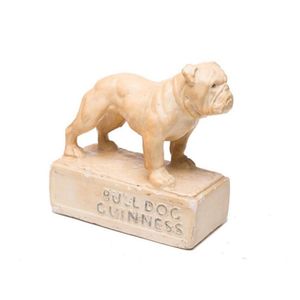17th Century Tibetan Bronze Padmasambhava Figure with Medicine Buddhas
You must be a subscriber, and be logged in to view price and dealer details.
Subscribe Now to view actual auction price for this item
When you subscribe, you have the option of setting the currency in which to display prices to $Au, $US, $NZ or Stg.
- Bronze - An alloy of copper and tin, traditionally in the proportions of about 9 parts of copper to 1 part of tin.
The discovery of bronze in Western Asia in the 4th century enabled people to create metal objects which were superior to those previoulsy possible because of its strength and hardness, and it has been used throughout the world for weapons, coins, tools, statuary and other decorative items.
It is very fluid in a molten state, and its hardness, strength when set, and non-corrosive properties makes it most suitable for casting sculpture. - Circa - A Latin term meaning 'about', often used in the antique trade to give an approximate date for the piece, usually considered to be five years on either side of the circa year. Thus, circa 1900 means the piece was made about 1900, probably between 1895 and 1905. The expression is sometimes abbreviated to c.1900.
This item has been included into following indexes:
-
Oriental deities, bronze
- Buddha 629
- Tibetan deities 124
- Oriental deities, Tibetan and Sino-Tibetan - Buddha and other deities 252
Visually similar items

A set of six Norwegian silver and enamel teaspoons, gilded, six different enamel shades; N M Thume, Norway.

An original bulldog Guinness advertising figure, by repute of the Gold Mines Hotel, Bendigo

French sapper's sword of the early 19th century, approx 85 cm overall with 69 cm curved single edged fullered blade, finely cast and chiselled brass hilt with cockered pommel and lion's head quillon tips

A Spinel and diamond ring, the natural emerald cut lavender spinel of 5.13cts, flanked by baguette cut diamonds totalling 0.81cts, mounted in 18ct white gold, ring size M.
